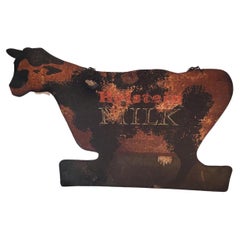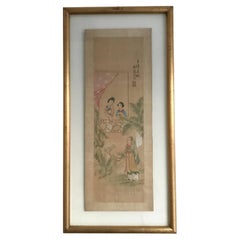Los Angeles - Decorative Art
1940s American Art Deco Vintage Los Angeles - Decorative Art
Wood
19th Century French Louis XV Antique Los Angeles - Decorative Art
Gesso, Canvas, Wood
20th Century American Folk Art Los Angeles - Decorative Art
Metal
Mid-20th Century French Los Angeles - Decorative Art
Paper
1960s Italian Vintage Los Angeles - Decorative Art
Wood, Paper
Early 20th Century Chinese Los Angeles - Decorative Art
Glass, Wood, Paper
Early 20th Century North American American Craftsman Los Angeles - Decorative Art
Wood
Late 19th Century French Romantic Antique Los Angeles - Decorative Art
Canvas, Wood, Plywood
1970s Dutch Mid-Century Modern Vintage Los Angeles - Decorative Art
Steel
1960s German Vintage Los Angeles - Decorative Art
Ceramic
Early 1700s Belgian Baroque Antique Los Angeles - Decorative Art
Wool
19th Century Italian Antique Los Angeles - Decorative Art
1980s Spanish Post-Modern Vintage Los Angeles - Decorative Art
Bronze
Early 1900s French Belle Époque Antique Los Angeles - Decorative Art
Glass, Giltwood, Paper
18th Century Belgian Baroque Antique Los Angeles - Decorative Art
Wool, Silk
Early 20th Century Chinese Los Angeles - Decorative Art
Glass, Wood, Paper
Late 19th Century German Black Forest Antique Los Angeles - Decorative Art
Giltwood, Canvas
1950s Japanese Mid-Century Modern Vintage Los Angeles - Decorative Art
Paper
Mid-19th Century Italian Renaissance Revival Antique Los Angeles - Decorative Art
Wood, Giltwood
20th Century Egyptian Islamic Los Angeles - Decorative Art
Ceramic
Mid-20th Century American Modern Los Angeles - Decorative Art
Metal
19th Century French Antique Los Angeles - Decorative Art
Wood
19th Century French Renaissance Revival Antique Los Angeles - Decorative Art
Giltwood, Canvas
19th Century Italian Baroque Revival Antique Los Angeles - Decorative Art
Wood
Early 19th Century Belgian Baroque Antique Los Angeles - Decorative Art
Wool, Silk
Mid-20th Century Mexican Modern Los Angeles - Decorative Art
Copper
Early 20th Century German Art Nouveau Los Angeles - Decorative Art
Paper
Early 1900s Italian Greco Roman Antique Los Angeles - Decorative Art
Other
19th Century French Romantic Antique Los Angeles - Decorative Art
Canvas, Giltwood
19th Century French Antique Los Angeles - Decorative Art
Wood
19th Century French Greco Roman Antique Los Angeles - Decorative Art
Composition
19th Century English Victorian Antique Los Angeles - Decorative Art
Gesso, Wood
19th Century Danish Beaux Arts Antique Los Angeles - Decorative Art
Canvas, Giltwood
1910s Italian Baroque Vintage Los Angeles - Decorative Art
Canvas, Giltwood
19th Century Italian Baroque Antique Los Angeles - Decorative Art
Gesso, Canvas, Wood
Early 1900s Austrian Folk Art Antique Los Angeles - Decorative Art
Canvas, Giltwood
Early 1900s Italian Greco Roman Antique Los Angeles - Decorative Art
Other
1970s Spanish Modern Vintage Los Angeles - Decorative Art
Stainless Steel
18th Century Finnish Baroque Antique Los Angeles - Decorative Art
Glass, Giltwood, Paint
19th Century German Country Antique Los Angeles - Decorative Art
Giltwood, Canvas
Mid-20th Century North American Los Angeles - Decorative Art
Maple, Paper
Late 20th Century American Post-Modern Los Angeles - Decorative Art
Bronze
17th Century Italian Renaissance Antique Los Angeles - Decorative Art
Gesso, Canvas, Giltwood
19th Century German Victorian Antique Los Angeles - Decorative Art
Gesso, Canvas, Giltwood
20th Century Unknown Post-Modern Los Angeles - Decorative Art
Linen, Natural Fiber, Glass, Wood, Paint
Early 20th Century Moroccan Other Los Angeles - Decorative Art
Canvas
1880s French Antique Los Angeles - Decorative Art
Giltwood, Canvas
18th Century French French Provincial Antique Los Angeles - Decorative Art
Other
1850s British Renaissance Antique Los Angeles - Decorative Art
Canvas
1980s Spanish Post-Modern Vintage Los Angeles - Decorative Art
Bronze
Early 1800s French Louis XV Antique Los Angeles - Decorative Art
Canvas, Giltwood
19th Century English Late Victorian Antique Los Angeles - Decorative Art
Gesso, Canvas, Giltwood
1960s American Modern Vintage Los Angeles - Decorative Art
Paper
Mid-20th Century Italian Modern Los Angeles - Decorative Art
Glass
19th Century Belgian Country Antique Los Angeles - Decorative Art
Canvas, Giltwood
1970s American Vintage Los Angeles - Decorative Art
Wood
Early 1800s French Directoire Antique Los Angeles - Decorative Art
Copper
19th Century Austrian Antique Los Angeles - Decorative Art
Porcelain
19th Century Italian Rococo Antique Los Angeles - Decorative Art
Gesso, Canvas, Wood
1970s American Bohemian Vintage Los Angeles - Decorative Art
Wool, Jute
Read More
At Colonial Williamsburg, Everything Old Is New Again
With the help of a new director, the Virginia institution's folk art and decorative arts museums are undergoing extensive upgrades.
New York’s Hirschl & Adler Showcases the American Workmanship and Design Panache of Neoclassical Treasures
The gallery's latest exhibition proves that museum-quality pieces entice and inspire, whether in traditional or more modern interiors.





